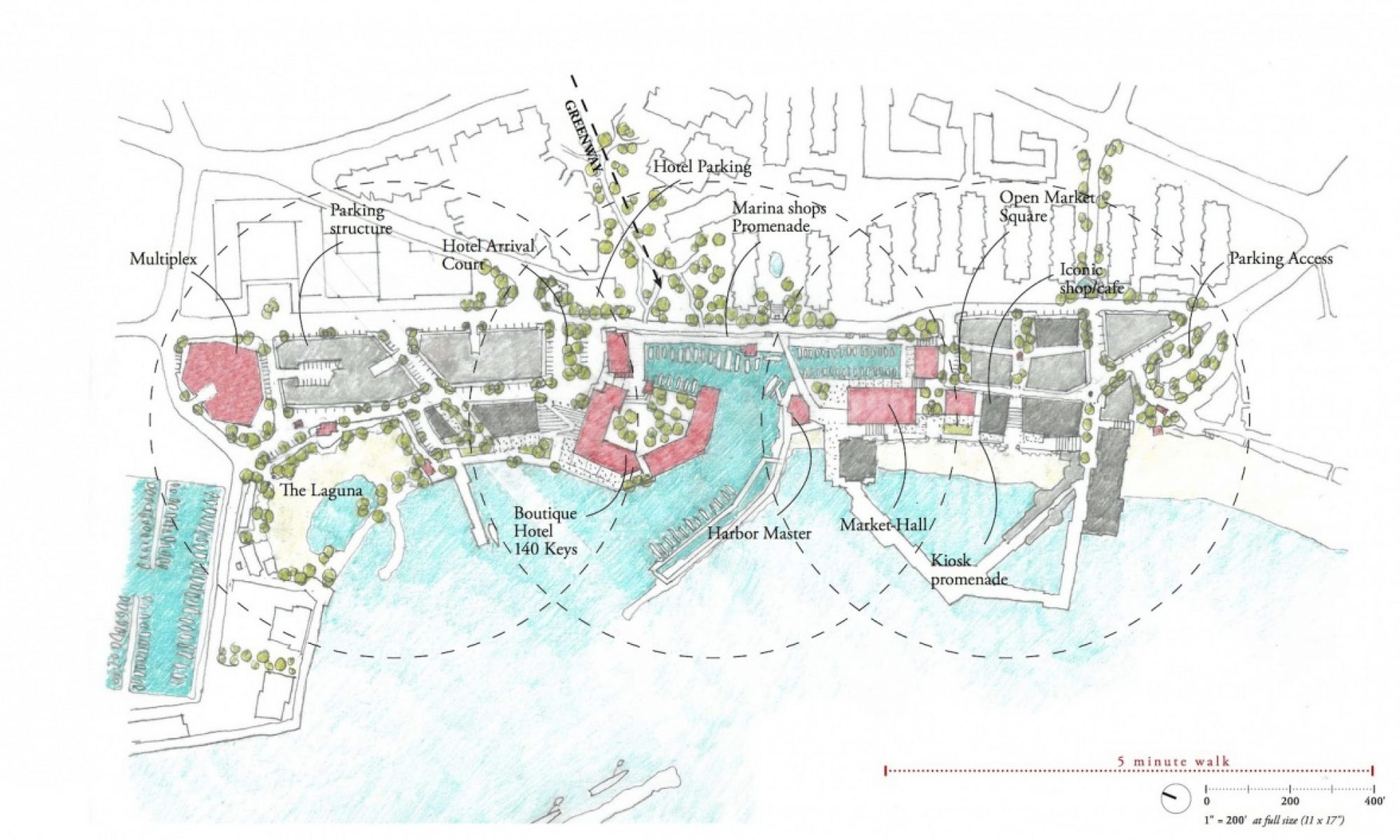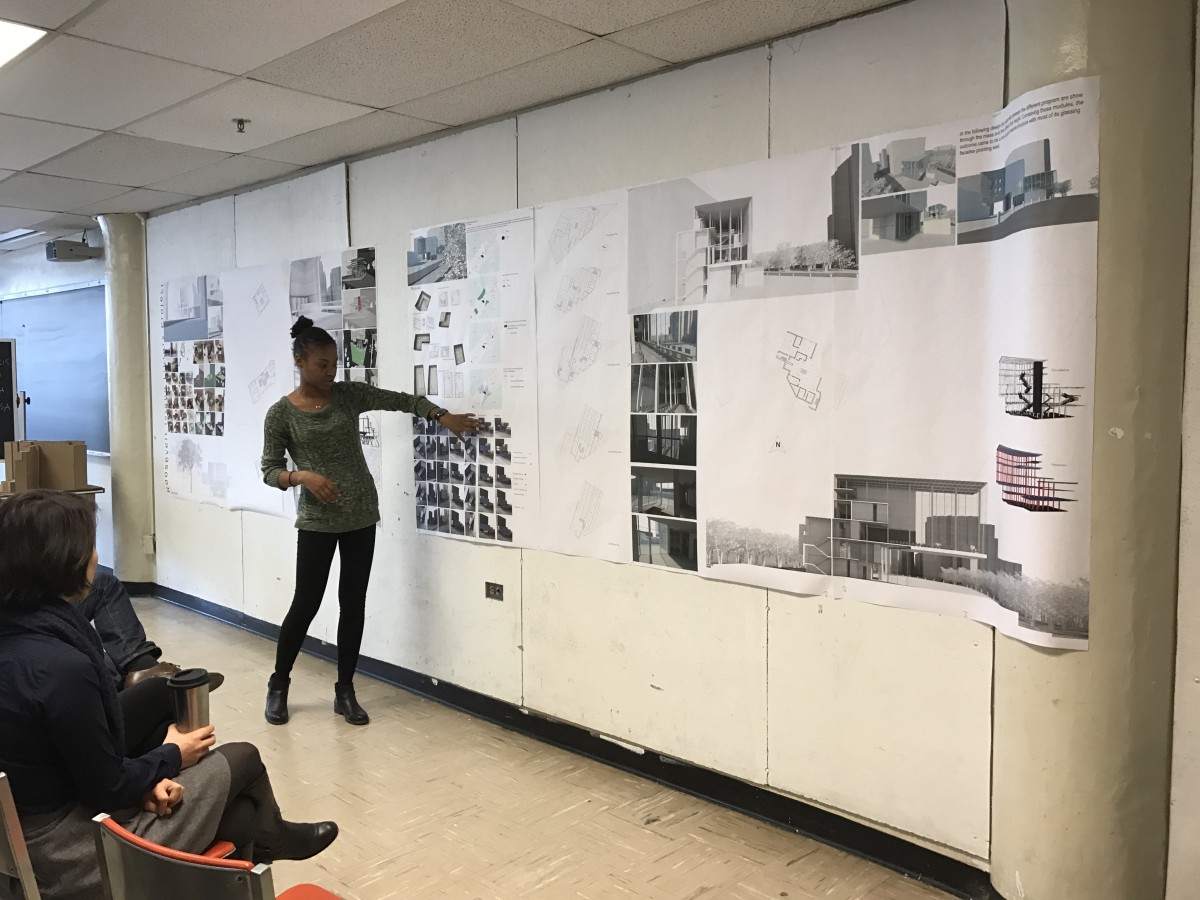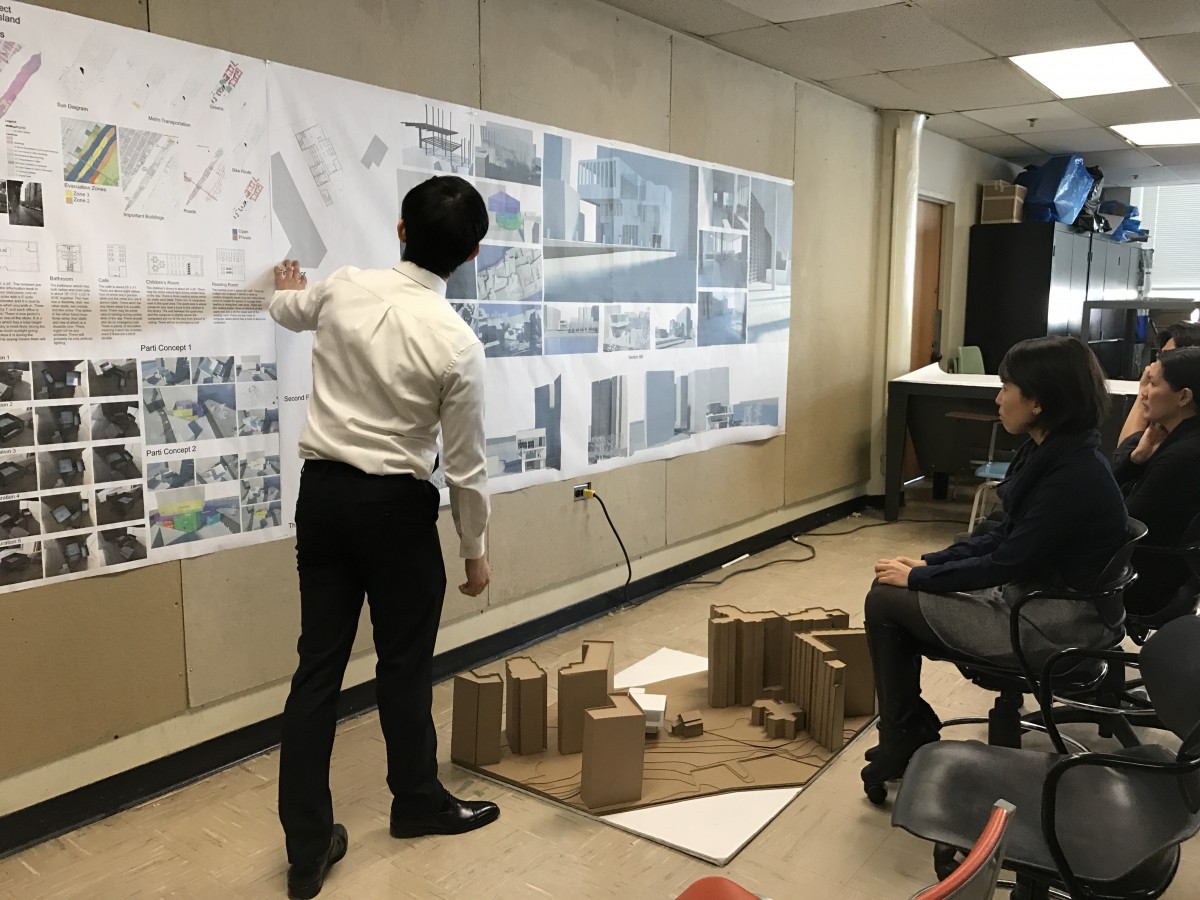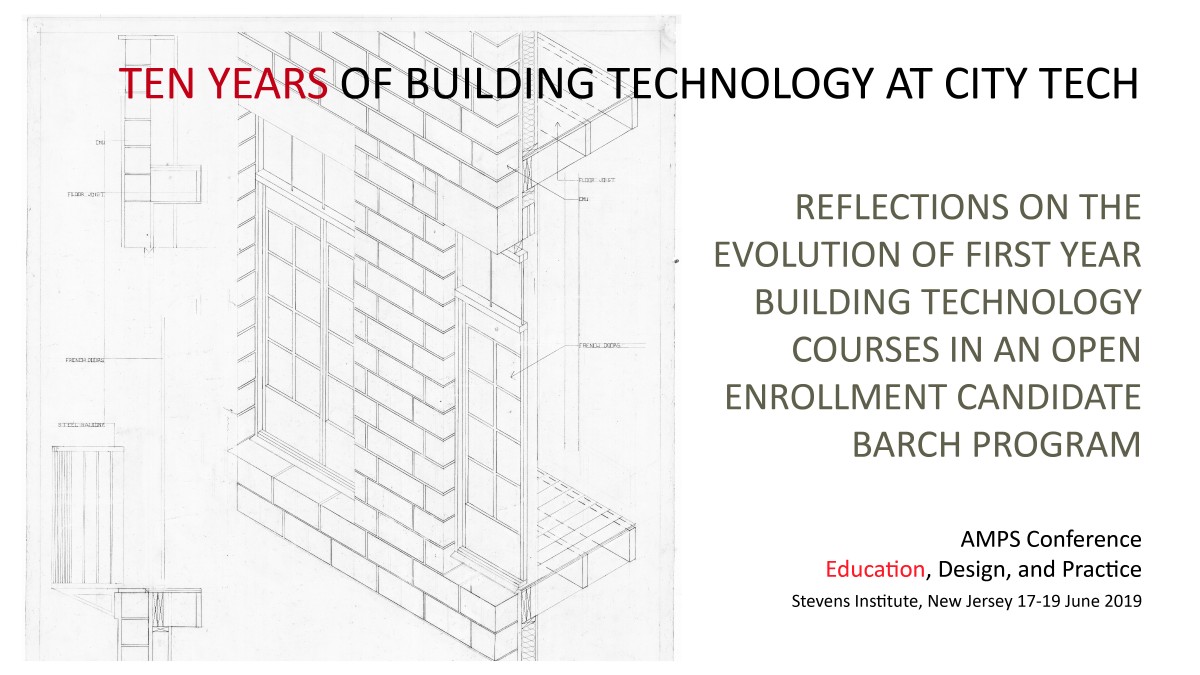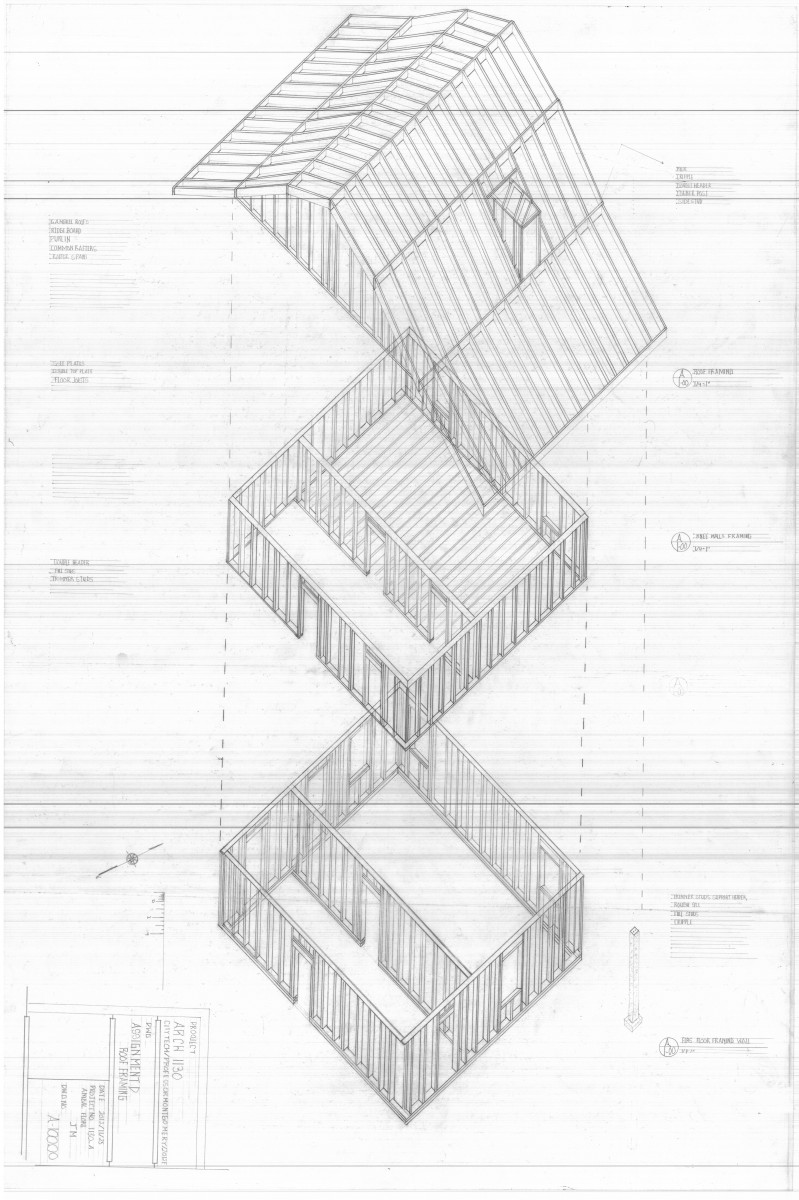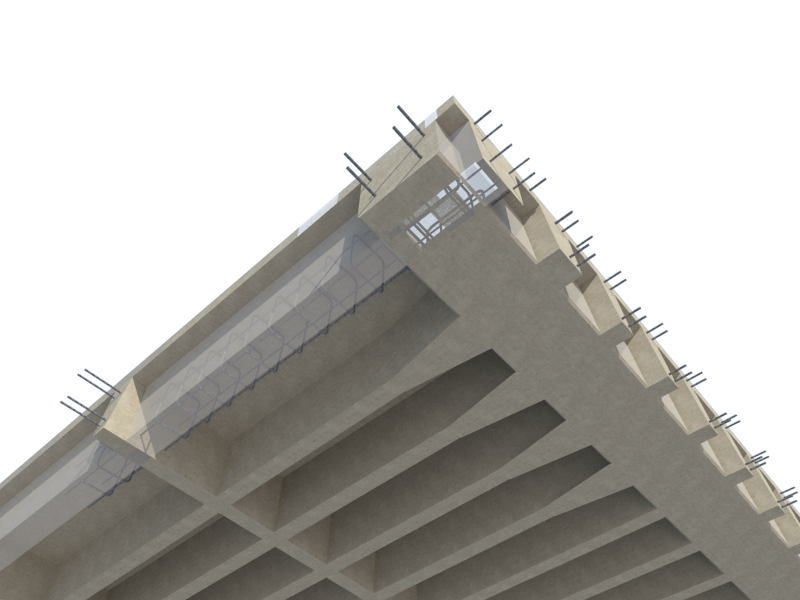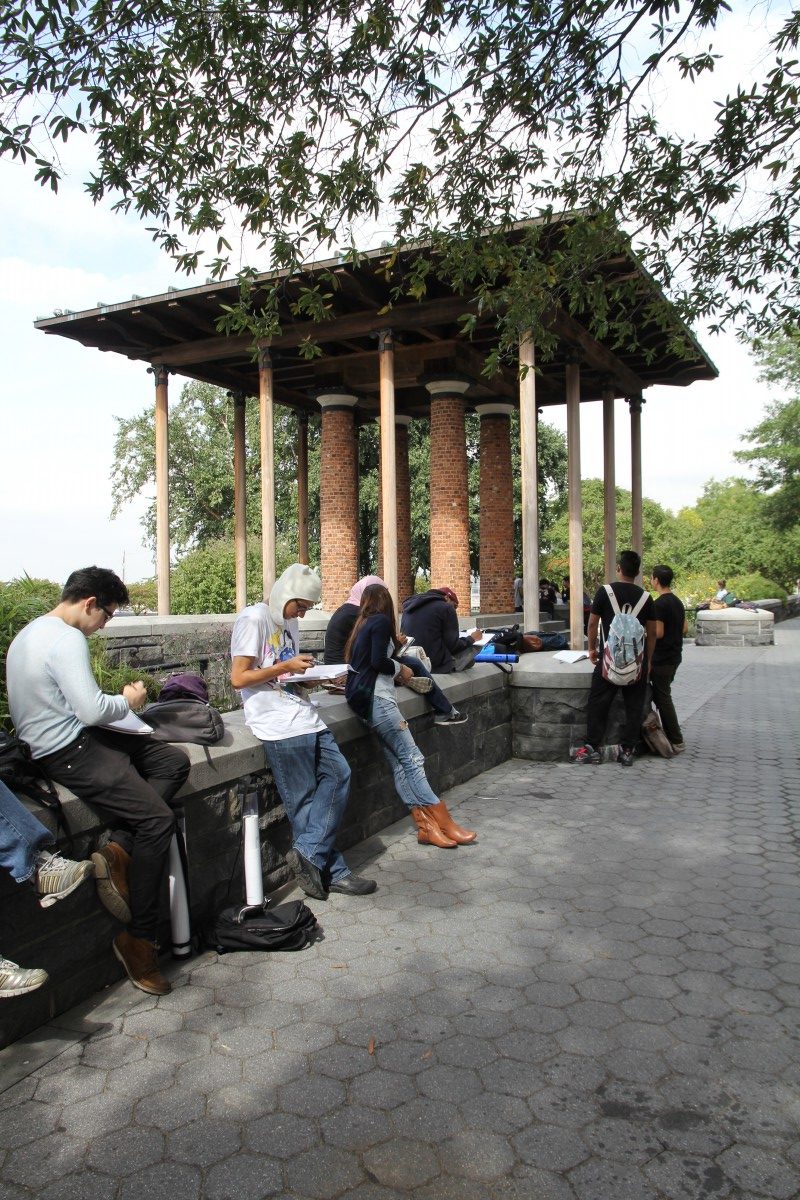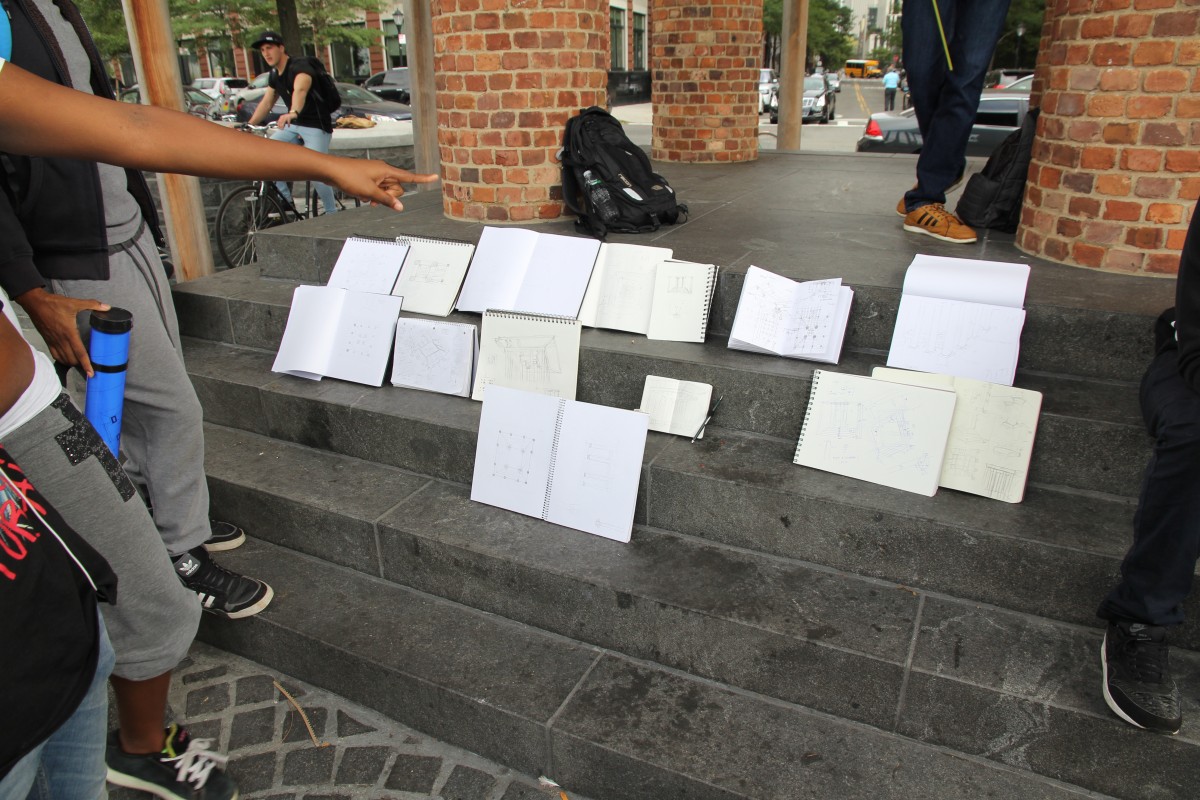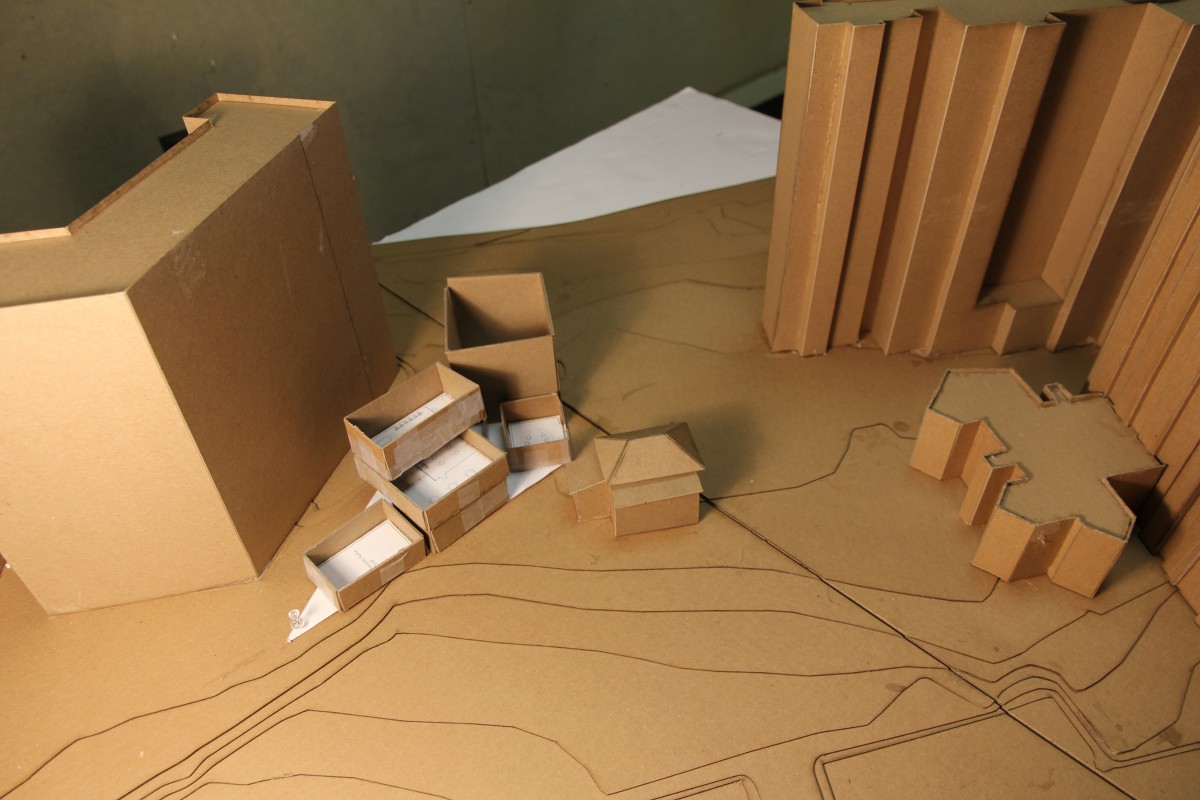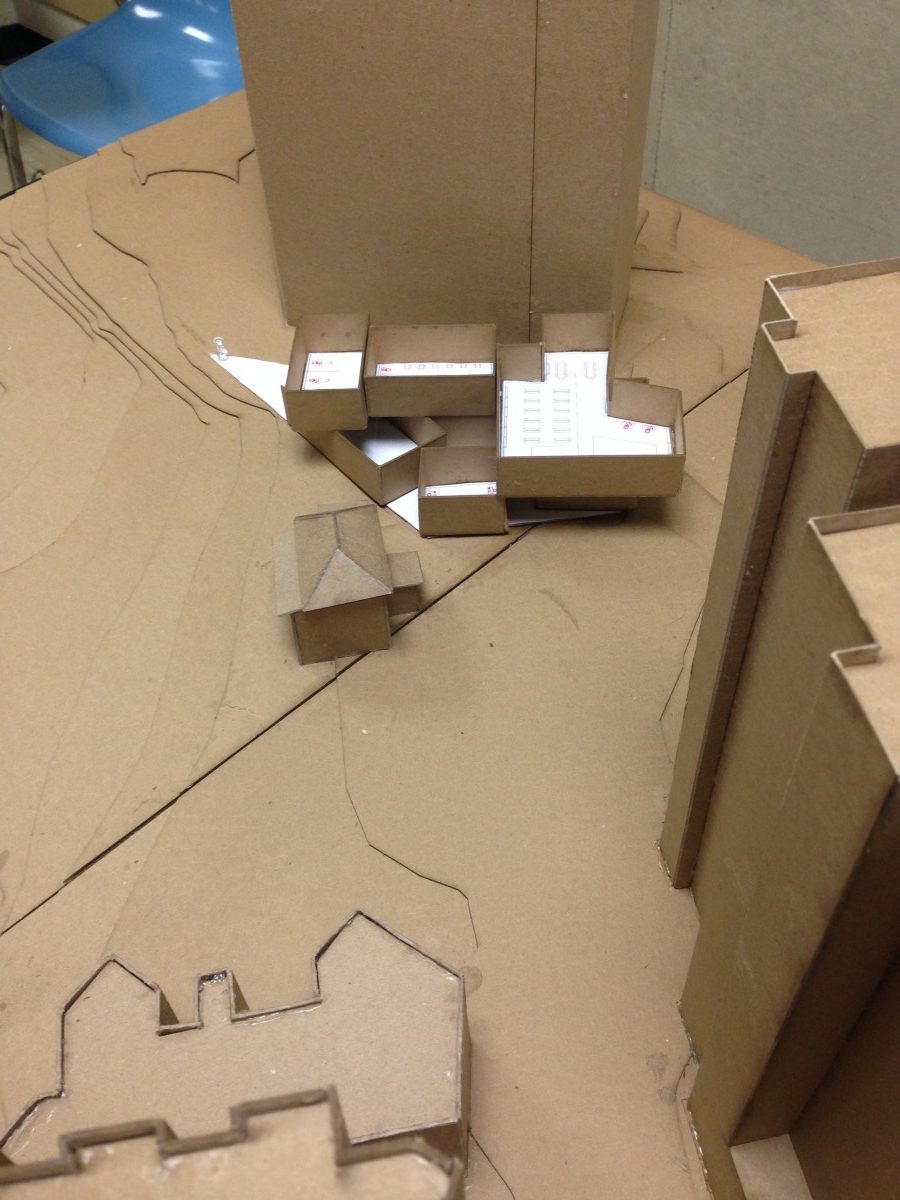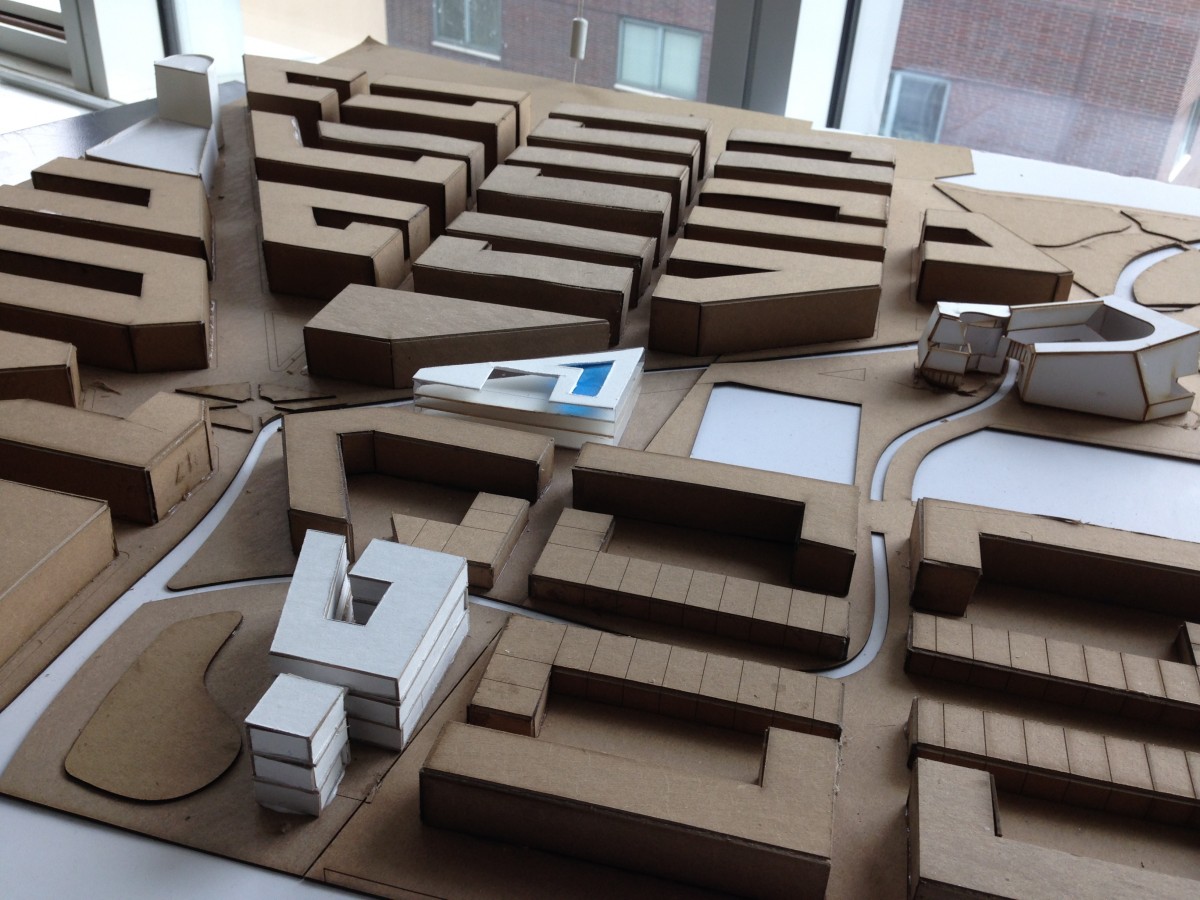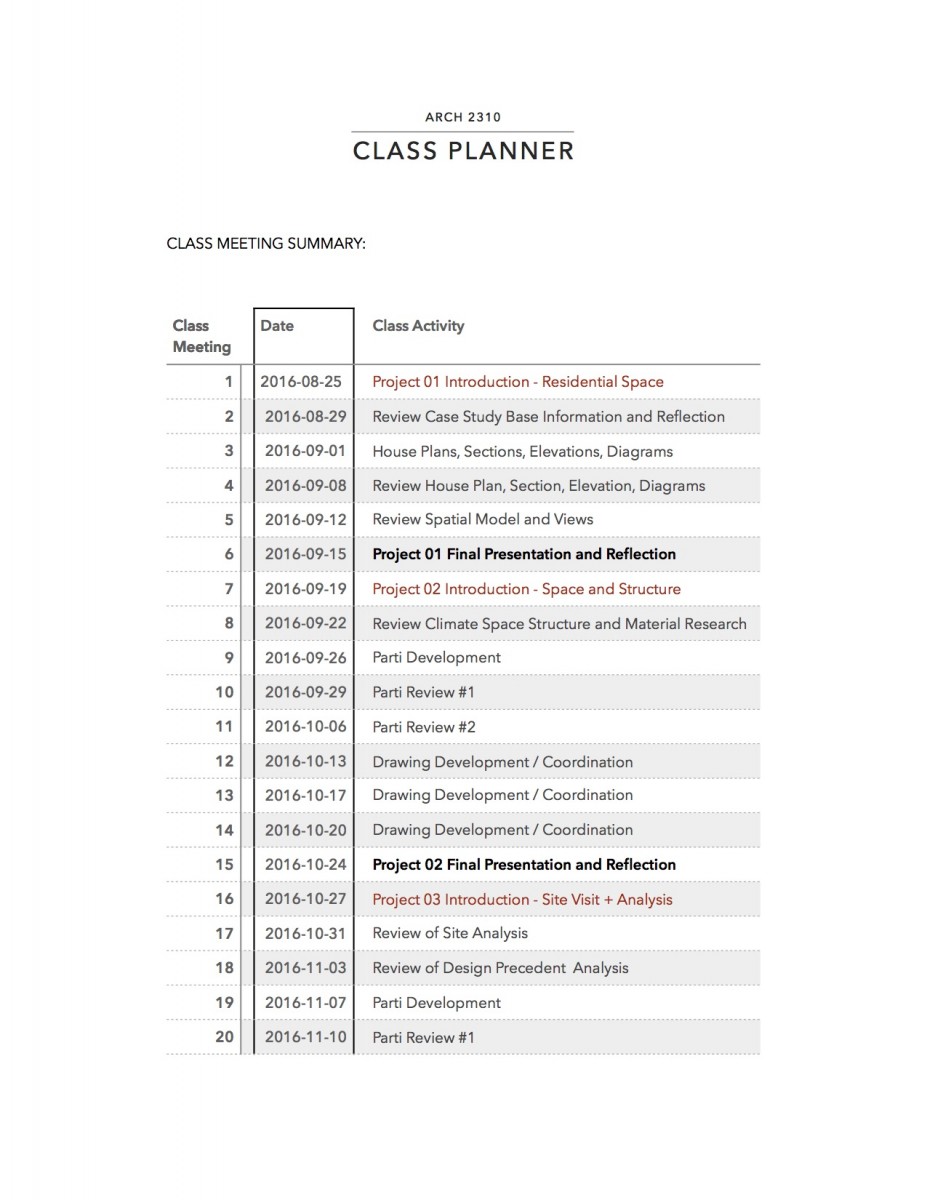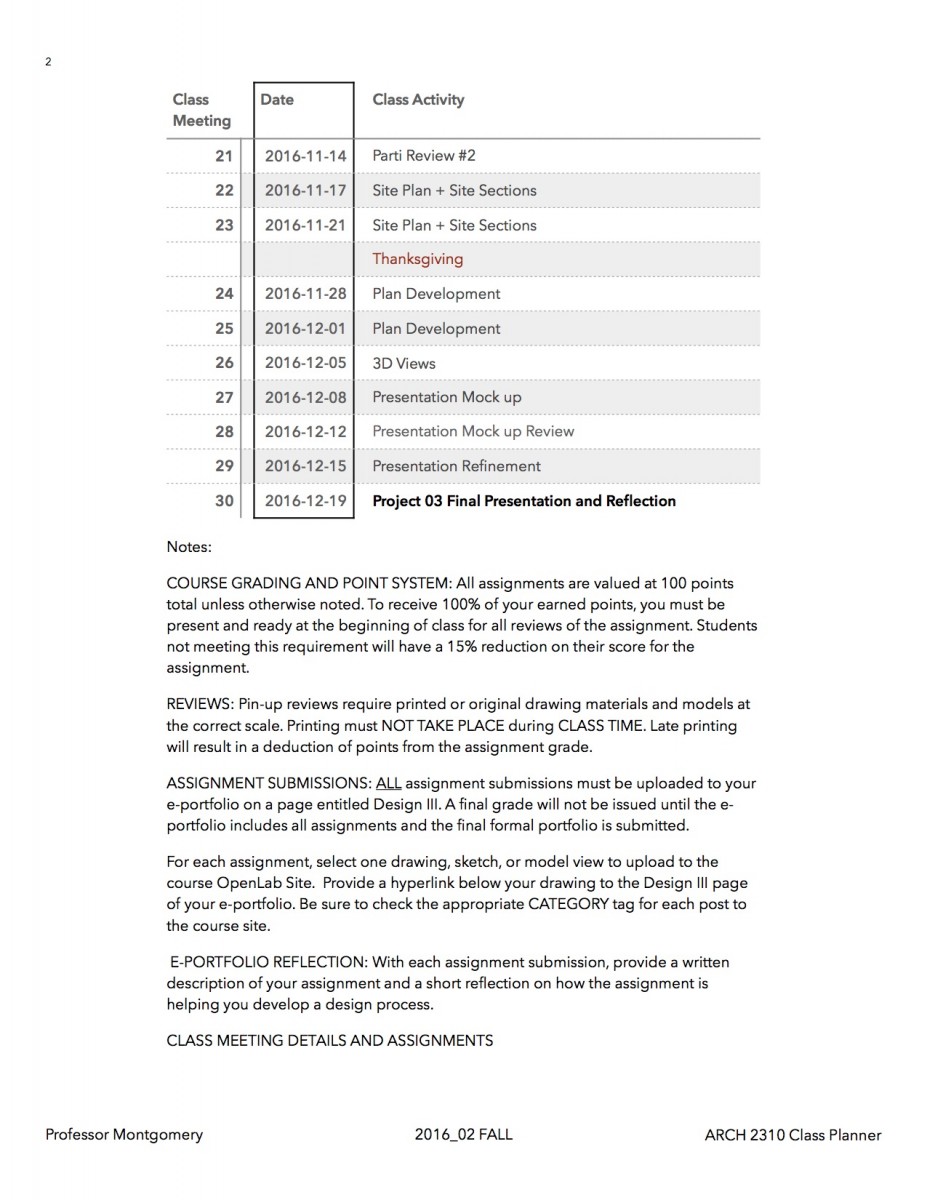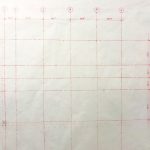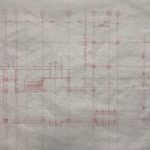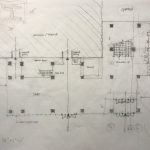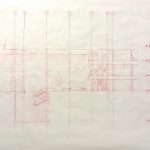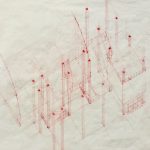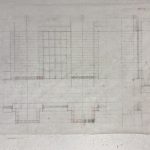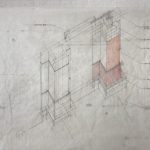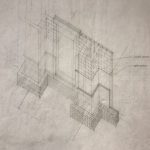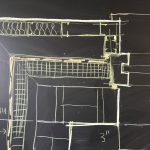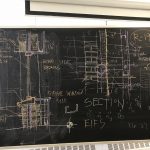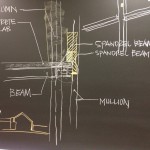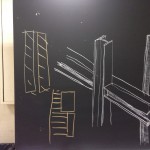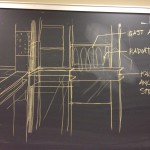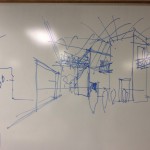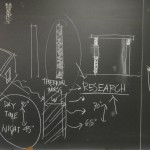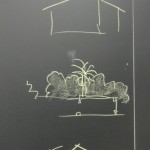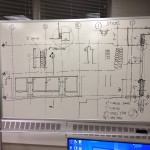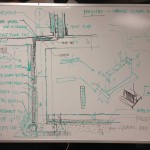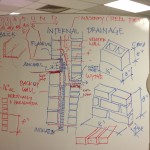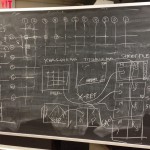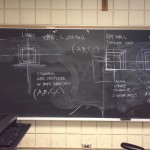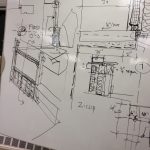Students presenting their scaffolded design work, from initial diagrams and models to final renderings in one cohesive presentation at a large scale. This approach that I developed helps students learn more professional presentation techniques than the typical individual 24×36 board, which often inhibits story telling as well as limits the scale of materials presented.
Evolving and Reforming Curriculum:
I am an active educator, always seeking improved and/or research supported approaches to enhancing my students’ learning. Below are some examples of methods I have applied in my courses.
A recent presentation of my paper at the AMPS International Conference on Architectural Education outlines my transformation and techniques for teaching Building Technology courses at City Tech.
Supporting Reading and Disciplinary Literacy:
See my book chapter on Architectural Education, Reading, and Disciplinary Literacy on my many techniques and methods for teaching through text at City Tech.
https://openlab.citytech.cuny.edu/jmontgomery-portfolio/scholarly-work/publication-production/book-journal-contributions/architecture-scaffolding-reading-drawings-and-technical-texts/
BUILDING TECH I:
Please use this link to download my archive of my Building Tech I course syllabi from 2012-2016 as well as an assessment study and course change report I prepared as part of the 5th Year Fellowship of the Living Lab Grant: https://drive.google.com/open?id=1A0eXkYTvPzhHJLZ6Bs85JFvImcDTQtsp
This stage of the fellowship program was focused on incorporating GEN ED learning objectives into courses and developing a methodology for changing courses to improve GEN ED and discipline specific learning outcomes.
The report documents the data we collected and the rationale for revisions to the assignments and methods for teaching the technical content. The course changes were carefully reviewed and discussed at a series of course coordination meetings with the faculty teaching Building Tech I ( including Anthony Romeo, Samuel Scott, Robert Zagaroli, Lynn Gernert) where we came to a consensus on adjustments. Among the most significant adjustments was the change of strategy from readings assessed through weekly quizzes to direct assessment of the student notes and annotations of the reading material as well as through student presentations on the reading material. We also discussed alternatives to the traditional lecture to stimulate active learning in our classrooms.
Another level of review and discussion was at the First Year course meetings where faculty discussed how to coordinate better the drawing skills development of first year student and how Building Tech I could better support the Foundations courses. Many of these issues facing Building Tech I were discussed as well at the NAAB committee meetings where we formulated the need for an Intro to Architecture Course, especially to address the Gen Ed challenges confronting incoming first year first semester students.
The Building Tech I faculty also collaborated with the READ Program, providing data for the Provost’s office on reading skills development at City Tech and strategies to improve reading. Some of these issues are now being addressed by Intro to Architecture, but I recommend we continue to pay close attention to the reading skills and note taking skills of our first year students. These are critical foundations for the development of technical knowledge.
This course utilizes hand drafting throughout the semester, which is an important prerequisite to digital drafting. Hand-drafting nurtures the development of direct hand/mind/eye coordination, which feeds critical thinking and problem solving skills required for both design studio and higher level building technology courses.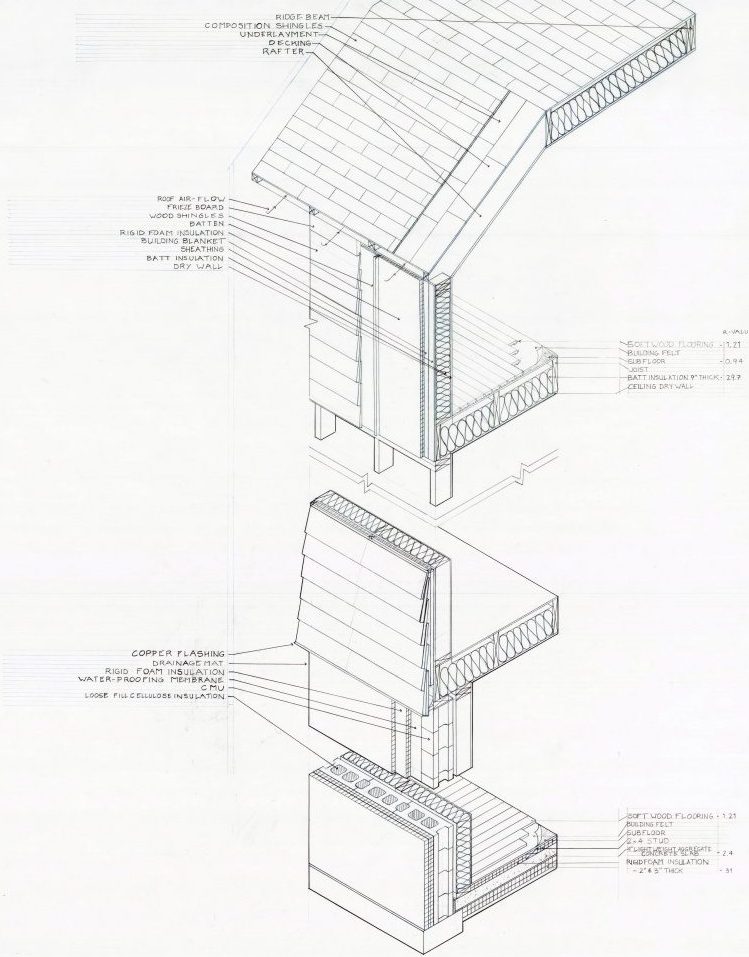
The drafting work in this course combines two-dimensional and three-dimensional exercises. This is critical for three reasons. First, students often struggle with two-dimensional drawing as it is a significant abstraction from their experience of buildings and materials. Three-dimensional drawing is more familiar and intuitive for the students. Second, three-dimensional construction of drawings is an excellent assessment tool for student understanding. It is quickly apparent when students are confused about the volume or position of elements in their three-dimensional constructions. Third, this emphasis on three-dimensional drawing is a critical skill for students of architecture. Architects must always work out problems of relationships of parts in three-dimensions to anticipate both their visual and volume-metric qualities but also to resolve construct-ability issues prior to site construction.
BUILDING TECH II:
Here is the kink to an archive of Building Tech II course syllabi: https://drive.google.com/open?id=1shewFSQgoDJLX-N50vSy5sX1iBp5LKYs
Our most recent adjustments to this course build on the adjustments we developed for Building Tech I. This includes assessment of reading through text annotations, sketches, and notes rather than quizzes.
We are also applying place based education principles and active learning through on-site seminars incorporating inquiry and sketching that bring students to sites of concrete and steel frame construction, examples of different structural typologies, a variety of exterior wall installations in progress, and the significance of circulation and stair design in public buildings. This approach builds the students’ understanding of the connection between their learning about architecture and the city as a laboratory for learning, facilitating self learning habits focused on paying attention to the built environment around them and using their skills of careful observation.
Also, we are experimenting with the value of having the students hand draft each assignment first, do hand drawing analysis of the case study plan elements and section elements, and then translating the assignments into AutoCAD, with the students building the dwg file from scratch following the syllabus requirements. I believe this will be an excellent model for the revised Building Tech I.
We will need to assess at the end of the semester, but so far I am seeing clearly that hand drafting reveals students’ understanding or struggles with orthogonal drawing, the level of rigor of their work (dimensional accuracy, drawing conventions, line weights) the care they take in executing work and submitting it (well packaged drawing submission, ordered and titled versus unorganized, poorly packaged submissions and torn edges to the paper, lack of lettering and titles….)
The use of grid-ed buildings is proving to be valuable, as it offers a clear organizational structure to the students for their drawings but also their thinking about structure and buildings as organized systems. We have used a range of case study buildings for this course, some more complex and subtle and some more straight forward, but all of the case studies are World Class Grade A architecture that have historical significance. We have also recently incorporated building types (houses and libraries) that coordinate with Design III. This offers students another layer of precedent study to enhance their design studio work and to help them make connections between design and building technology.
We are also running a Gen Ed assessment with the AIR office this semester measuring Life Long Learning.
Case-Study Buildings:
Case-study buildings are a central strategy for much of my teaching. Over the course of my time leading the building tech courses, we have brought students to buildings both in the five boroughs but also beyond, including New Haven CT.
Place-based Learning Methods:
I am a leader in taking students out of the classroom at City Tech. Since I taught in Italy for Notre Dame, teaching in situ is a natural practice and method for me. I recognize the power of first hand observation place-based learning offers students. Not all sites are equal, however, so I select sites that have poignant representation of the concepts central to my courses, like the clear tectonics of the Porphyrios Pavilion in Battery Park.
Modeling for Success in Design Studios:
My experience teaching design studio at other institutions, including Notre Dame, Yale, and Andrews University, provides me with an extensive foundation of critical approaches to helping students evolve higher level strategies and execution for design projects.
My analysis of our department’s studio teaching reveals a strong emphasis on form making, but this emphasis is often to the detriment of the spatial definition and quality of the spaces of the building, as well the logical organization and flow of space and circulation through the building. In my studios I work to foreground the quality of space, light, flow, circulation, movement through the building, allowing the building form to develop around these priorities. I have found the students respond well to this approach, especially when I scaffold the process, breaking it into a series of small steps that allow them to advance the design in a controlled and rational manner. Further, these steps are most powerful for learning when they are executed as card models that can be positioned on the site model in multiple configurations to “test” the relationship between interior and exterior spaces.
Scaffolding Design
In my experiences of teaching students in the earlier design studios, I realized that they needed help both managing time but also making incremental progress each week so that they could go further with the projects and achieve higher order learning. To do this I micro-managed the week to week scheduling and submission of projects, which each step contributing to the progress and building on the previous step. This is most apparent in my course websites as well as the week to week planner: ARCH2310 Class Planner_Day to Day_2016_02
Providing Explicit Examples for Students to Model and Use as Templates
This teaching method first helps students see clearly what they are trying to accomplish in the assignment. Second, the provision of a template that I create lets the students focus on content rather than form and presentation. The template also models professional presentation skills.
Graphic Analysis Examples as Templates for Student Urban Analysis Assignment:
 I develop my own clear and graphically strong samples of my assignments in order to communicate both the content of the assignment as well as the quality required for the presentation of the assignment. I have found that student expectations and performance are improved when they have a clear example as a model for their work. They also respond to the Professor’s effort of doing a sample execution of an assignment with greater enthusiasm and a higher level of professionalism.
I develop my own clear and graphically strong samples of my assignments in order to communicate both the content of the assignment as well as the quality required for the presentation of the assignment. I have found that student expectations and performance are improved when they have a clear example as a model for their work. They also respond to the Professor’s effort of doing a sample execution of an assignment with greater enthusiasm and a higher level of professionalism.
https://openlab.citytech.cuny.edu/urban-design-reference/block-typologies/
Samples of Chalk Board / White Board/ In Class Demonstration Drawing
Drawing actively while discussing building components, relationships, and details is a important part of my teaching methodology. The students first of all see me performing directly and can appreciate my ability to investigate buildings both intellectually and through drawing simultaneously. I ask questions about what we should add next to the drawing, inviting the students to be active participants of the investigation. Drawings become less opaque to the students if they can follow their development step by step from the blank slate.
